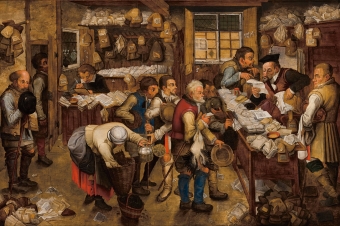Summary:
It is activity that focuses on the constitutional cases of tax immunity, followed by lecture on the content. It is intended that students build their theoretical and practical knowledge on the content of immunity. To this end, students are faced with two real cases that were the subject of judgment in the Superior Courts.
Objective:
- GENERAL GOALS: treat the concept of tax immunity, seeking to understand how the constitutional assumptions are applied in practice, and what are its limits and objectives;
- SPECIFIC GOALS: lead students to take a certain role (tax authorities, taxpayer or judge) and play that role in a dynamics judgment, where they should research, articulate and present arguments to solve a case related to tax immunities;
- Students intends to develop:
- contextual understanding by relating their pre-understandings with some basic and comprehensive concepts of Tax Law;
- technical-dogmatic knowledge, knowing and applying in practice the general concepts of Tax Law at odds with specific cases;
- advisory capacity, identifying incidences and tax burden in real situations.
Dynamics:
- NOTE: The class is preceded by another one in which students expose texts previously indicated to read and respond to guiding questions about the content matter;
- TEACHING METHOD: the method of role-playing/simulation, followed by lecture, in which students must play defined roles and interact as they would in a judgment. The final class serves as a systematization of these moments previous the reading, conducting exercises at home, students' exposure in the classroom and role-playing/simulation. It was described only the method of role-playing/simulation (Attachment1).
- INTRODUCTION TO THE DYNAMICS: the beginning of the class (5 first minutes), the students were divided into four groups (4-5) students - two groups accounted for the tax authorities, and two groups representing taxpayers;
- DEVELOPMENT OF THE DYNAMICS: the development of the dynamics can be seen in the constant slide in the attachment of this card and at the video available at YouTube: http://www.youtube.com/watchv=CR0QMDsCNEk?. The students had 55 minutes to research, articulate and prepare their arguments to the case. After that time, there were 30 minutes for discussion groups, voting of the judges and counting of votes (15 minutes for each set of Treasury, Taxpayer and Judge). While the Fisco 1 and taxpayer 1 groups presented their arguments on the case, the Fisco 2 and the Taxpayer 2 groups acted as judges, and vice versa. All students must necessarily manifest themselves during the debates. The same student could not manifest himself/herself two times in the same debate (if a student who had already manifested had an argumentative idea, he should convey his/her idea to the peer group). Each student had a time of 1 min to manifest. The professor controls the time of the demonstrations through the projection of "online timer" in the classroom screen. The sequence of investments goes as follows:
1st) TAXPAYERS Group 1 - two students participated, with a 1 min. demonstration each;
2nd) FISCO Group 1 - two students participated, with a 1 min. demonstration each;
3rd) CONTRIBUTORS Group 1 - Other two students participated, with a 1 min. demonstration each;
4th) FISCO Group 1 - Other two students participated, with a 1 min. demonstration each;
5th) Judgment and vote - TAXPAYERS 2 and FISCO 2 groups;
- END TO THE DYNAMICS: in the end of the class, the professor commented on the debates (last 10 minutes of class).
- ATTENTION IN THE CLASSROOM: a choice of judgment that supports the dynamics was quite subjective. Each case is more appropriate to highlight certain aspects of immunity, depending on much of what the professor wants to focus on, the level of students, interest, prior knowledge etc.
Evaluation:
- FEEDBACK: The dynamics was commented in the end of the debates and classes;
- GRADE EVALUATION: it occurred at all times of the role-playing/simulation. The professor gave notice of participation during discussions between groups to formulate arguments, grade for the presentation of arguments by the students and grade the decision of the "judges", which should be delivered in writing and to unjustifiably. In addition to the individual grade, there was a grade for the group, as it is winning (maximum grade) or was defeated (no score).
Observation:
Copyright from the cover page image (cropped):
Image: "Coins," by Author Unknown, available in the public domain on the website Pexels





